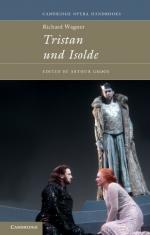|
This section contains 3,889 words (approx. 13 pages at 300 words per page) |

|
SOURCE: O'Sullivan, Thomas D. “The Perfect Wagnerite: Shaw's Reading of the Ring.” English Literature in Transition (1880-1920) 30, no. 1 (1987): 39-47.
In the following essay, O'Sullivan critiques George Bernard Shaw's interpretation of Wagner's Ring as a political allegory.
George Bernard Shaw's The Perfect Wagnerite1 is generally recognized as a lucid, witty, and informative introduction to Richard Wagner's tetralogy Der Ring des Nibelungen. Shaw's allegorical exegesis of the Ring has often been characterized as unbalanced, however, because of its heavy emphasis on political economy. Robert Donington, for example, describes The Perfect Wagnerite as “a one-sided study which does full justice to the economic issues but to very little else.”2 John DiGaetani, admitting that Shaw's “view of the Ring … is very well defended and still valid,” says that “he does, however, ignore other possible interpretations of the tetralogy.”3 And Paul A. Hummert characterizes The Perfect Wagnerite as “Das Kapital tempered by Shaw's...
|
This section contains 3,889 words (approx. 13 pages at 300 words per page) |

|


